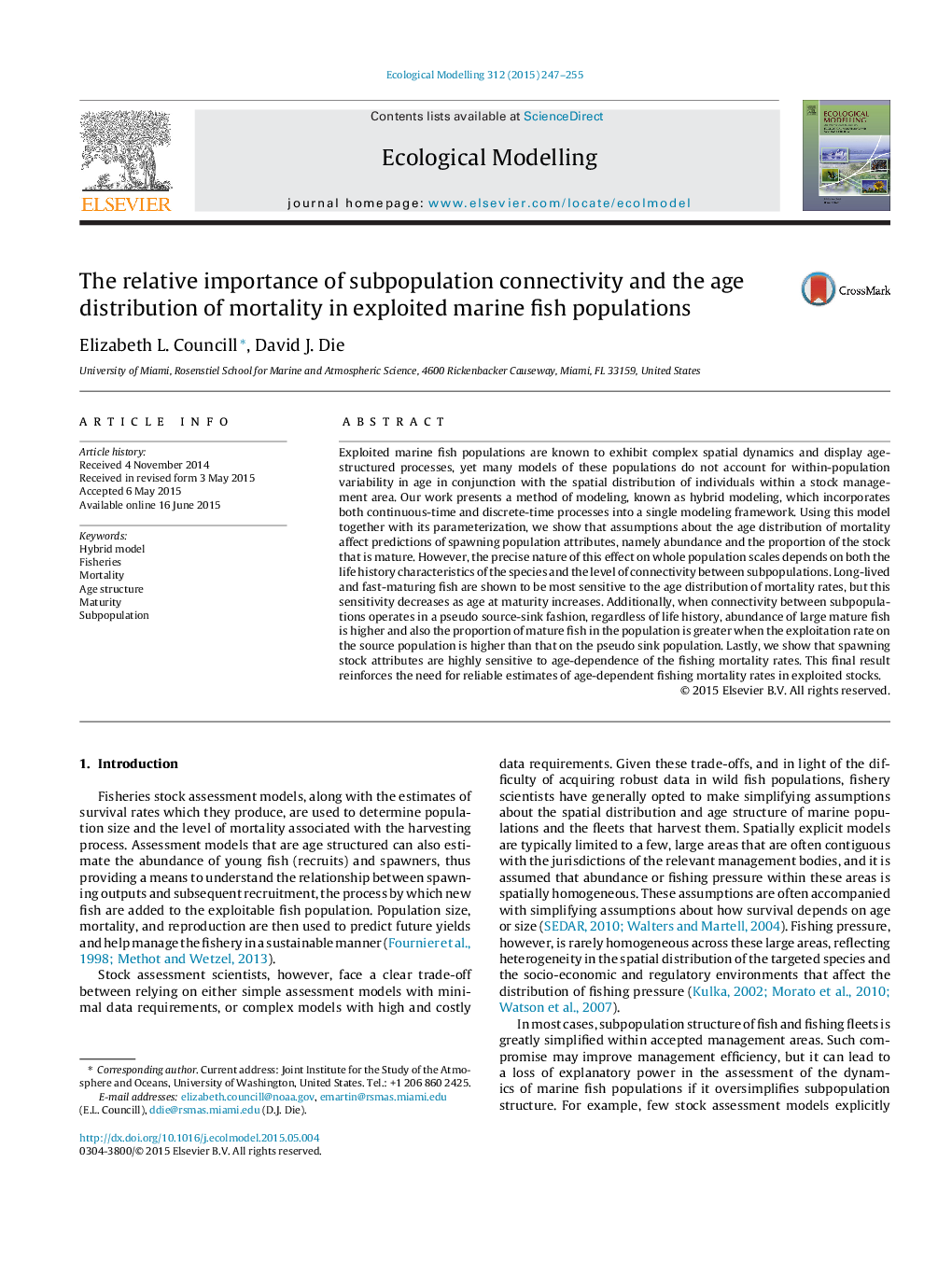| Article ID | Journal | Published Year | Pages | File Type |
|---|---|---|---|---|
| 6296550 | Ecological Modelling | 2015 | 9 Pages |
Abstract
Exploited marine fish populations are known to exhibit complex spatial dynamics and display age-structured processes, yet many models of these populations do not account for within-population variability in age in conjunction with the spatial distribution of individuals within a stock management area. Our work presents a method of modeling, known as hybrid modeling, which incorporates both continuous-time and discrete-time processes into a single modeling framework. Using this model together with its parameterization, we show that assumptions about the age distribution of mortality affect predictions of spawning population attributes, namely abundance and the proportion of the stock that is mature. However, the precise nature of this effect on whole population scales depends on both the life history characteristics of the species and the level of connectivity between subpopulations. Long-lived and fast-maturing fish are shown to be most sensitive to the age distribution of mortality rates, but this sensitivity decreases as age at maturity increases. Additionally, when connectivity between subpopulations operates in a pseudo source-sink fashion, regardless of life history, abundance of large mature fish is higher and also the proportion of mature fish in the population is greater when the exploitation rate on the source population is higher than that on the pseudo sink population. Lastly, we show that spawning stock attributes are highly sensitive to age-dependence of the fishing mortality rates. This final result reinforces the need for reliable estimates of age-dependent fishing mortality rates in exploited stocks.
Related Topics
Life Sciences
Agricultural and Biological Sciences
Ecology, Evolution, Behavior and Systematics
Authors
Elizabeth L. Councill, David J. Die,
